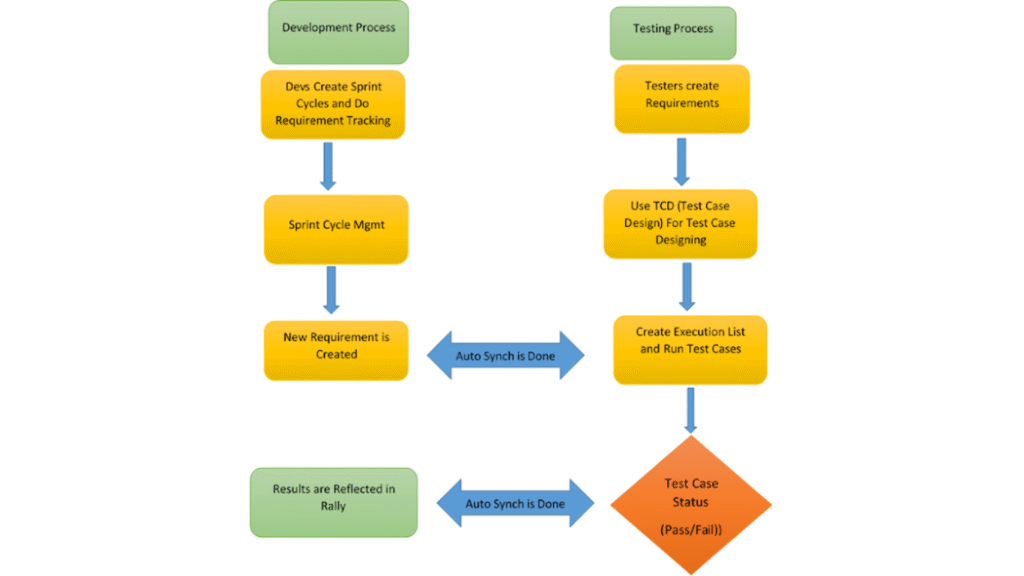When developing a new software product, one of the most important things to consider is the fragmentation of devices and software. A website or app may not function flawlessly on every device that is currently in use by default. Small variations in the parameters of the software and hardware can have a big impact on the end-user experience. Cross-platform, cross-device, and cross-browser testing are therefore necessary. Compatibility testing is the general word that applies to all of these tasks.
In theory, you can obtain wider coverage the more devices you utilise. A maximum amount of flaws should be able to be found and eliminated through software testing on many devices. Though it seems reasonable, this concept isn’t always practical. Covering the entire market is not feasible, on the one hand. Nevertheless, it is not required. It is improbable that the people in your target audience will use certain devices because they are exclusive to a certain area.
To put it another way, a wide variety of PC and smartphone models, operating systems, and browser versions should be used while testing on various devices. Furthermore, it usually doesn’t refer to every possible combination. Thus, what is the best way to test on a sufficient number of devices without wasting time? Should this list be created by a QA firm or a client? We will attempt to cover everything in this article. Check out the qa tester online course online to learn more.
How to Choose Devices, OS, and Browsers for Compatibility Testing?
The variety of devices and software they use is constantly expanding. How therefore can you ensure that you test mobile devices on a sufficient number of smartphones in order to obtain reliable results? And when it comes to laptops and PCs, how should websites be tested across several platforms? A corporation with the largest inventory of actual devices should be found and tested on all of them, according to certain theories.
To be honest, there are a number of reasons why testing on everything is typically unreasonable. It will take a long time to start. Second, the cost of the QA procedure increases. Thirdly, and perhaps most importantly, using fewer equipment and Compatibility Testing software alternatives, it might be able to obtain the same insights about product quality. It is only reasonable to test everything in specific cases.
Who Should Choose Devices For Compatibility Testing?
A client may occasionally bring a specified list of devices and other requirements to a QA company. As a result, the parties just need to verify that such devices are available. It is the responsibility of a software testing business to determine the optimal combination if a client has no particular requests.
In the first instance, the company’s statistics and user data provide the foundation for the device list. In the second scenario, a QA team makes decisions about browsers, operating systems, and devices based on usage data and their experience. Experience has shown me that more than half of clients arrive without a detailed list.
A lesser percentage has specific needs for the OS, browsers, and devices that are being targeted. In the end, just a select few must test on every item. We are always prepared to put together a plan that works for the product, no matter what the requirement.
Compatibility Testing for Existing Products
Market research and analysis should always come first. Determining the best device-OS-browser combinations for testing an existing product is made simpler because you can see which platforms and browsers provide traffic to your app or website. Look at Google Analytics to find out more. Visit SimilarWeb to obtain a traffic overview that includes total visits as well as traffic by nation and source. Utilise other data sources to learn more about your users and the technology stack they employ.
Real Device Testing For New Products
Find out what’s hot on the market if you don’t already know who your users are. You can select five to ten devices with various software options based on this data. Begin by formulating the following research questions:
- Which manufacturers of devices are the top ones?
- What are the most popular sizes for screens?
- Which OS versions are the most popular ones?
- Which browsers are most often used?
- What regional variations are there in this data?
The necessary information is available for free from certain sources. For example, StatCounter provides data on the vendor of the device, the operating system, the market share of the browser, screen resolution statistics, and more. Users have the option to view the data by period, country, area, etc. Numerous insights will be helpful for websites, web applications, and iOS and Android application testing.
Reports on online and mobile coverage indexes are periodically shared by certain companies, such as Perforce. They are based on customer information that a business has collected and show broad patterns in specific areas. Further details can be found in the following sources:
- Android Dashboards: a summary of the features of devices that are now in use.
- Data on iOS and iPad OS usage may be found on Apple’s official support pages.
- ScientiaMobile: A report on the mobile landscape.
- Information about the most popular devices, desktop and mobile OS versions, and desktop browsers used worldwide, in Europe, and in North America can be found on InsightPortal.
Dealing With Less Popular Devices And Specifications
You might be wondering what to do with the remaining browser and OS versions, as well as the less-used PC and smartphone models, after reading the information above. When you release a product, it is generally safe to presume that they are capable and functional. Since not all users enable automatic updates, it also makes sense to verify the fundamental functioning of the most recent versions of the OS and browser. This applies to testing mobile apps as well as websites.
A Risk-based Approach In Real Device Testing
Most of the time, testing a problematic region you are aware of is worthwhile. A device model that is prone to flaws could be the OS version, screen resolution, browser or its version.
When QA engineers are faced with challenging regions, they typically draw on prior expertise. Internet Explorer, for instance, is regarded as a problematic browser. It is a Windows default option, despite being hardly used and likely to be discontinued. It may make sense to test office applications on Explorer even if most users use other browsers on a regular basis.
In a similar vein, lower-resolution devices are more prone to experience UI-related issues. Consider testing the responsive mobile design on devices with low screen resolutions, like the iPhone SE with its 640×1136-pixel display.
Compatibility Maths: How Many Devices Are Enough?
As of 2019, there were 63,000 potential combinations of browser, platform, and device, according to BrowserStack. They offered this data as well as a strategy for effectively handling fragmentation. It turns out that by testing a website across: you can achieve 70%–80% of global device coverage.
Ten screen resolutions, six browser families, the most recent iterations of each family, two iOS versions, five stock Android versions, eight vendor implementations, and three different kinds of devices (tablets, desktops, and smartphones).
At that point, you should test your website across several devices. The list will be less if we are discussing testing mobile applications. Remember that there are other ways to mix the aforementioned characteristics. Stated differently, testing on every potential combination is not necessary.
Compatibility Under Tight Deadlines
It is not appropriate to stop compatibility testing due to a lack of time. Prior to the release, at least a few settings must be checked. If your product is a website or web application, for instance, test it on the most recent iterations of the following operating systems: Mac and Safari; Windows, Google Chrome, Firefox, and Microsoft Edge; iOS and Android phones; and iPad and Android tablet.
If it’s a mobile app that will soon be released, test it on an Android tablet, an iPad, and at least two iPhone and two Android models.
You can expand this list if it’s feasible, taking into account the time required to test on a single device. Several factors rely on the product being tested. Regardless of the hardware and software specifications of the device, the flaws would be essentially the same if it were a large informational website. Consequently, it is not necessary for a mobile app testing service to support a large number of combinations.
Conclusion
To learn more about Compatibility Testing, check out the qa tester courses online.























